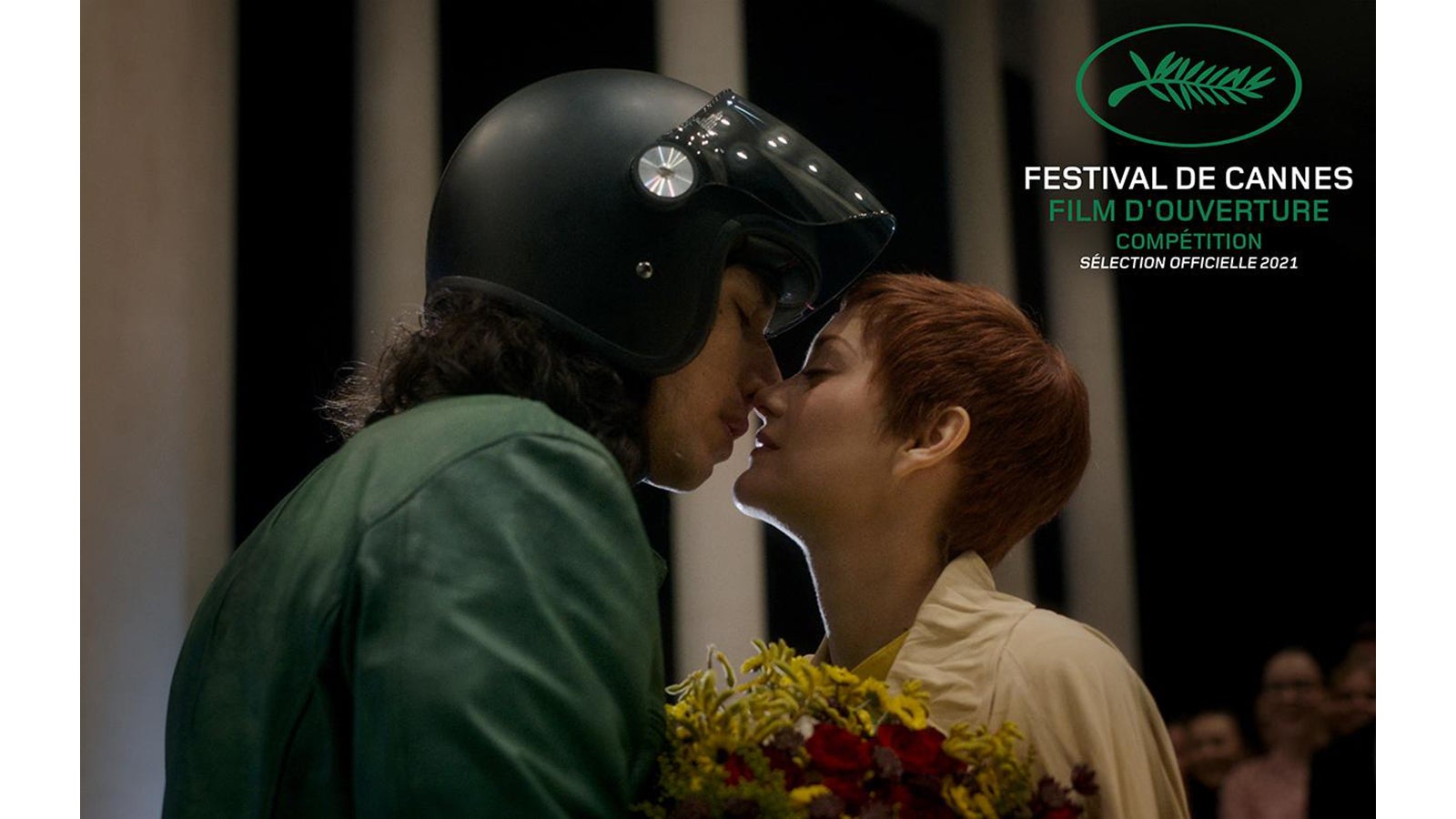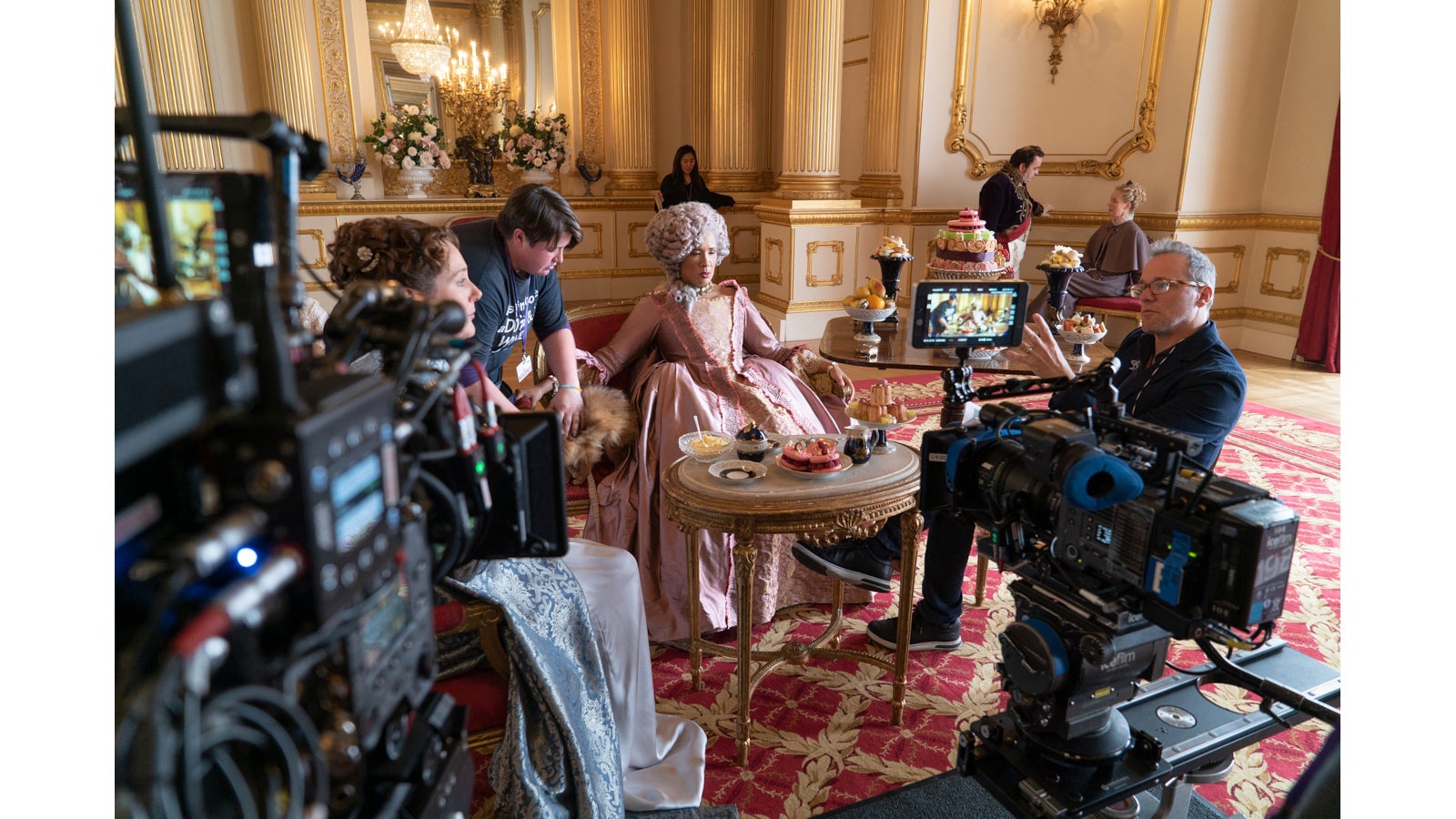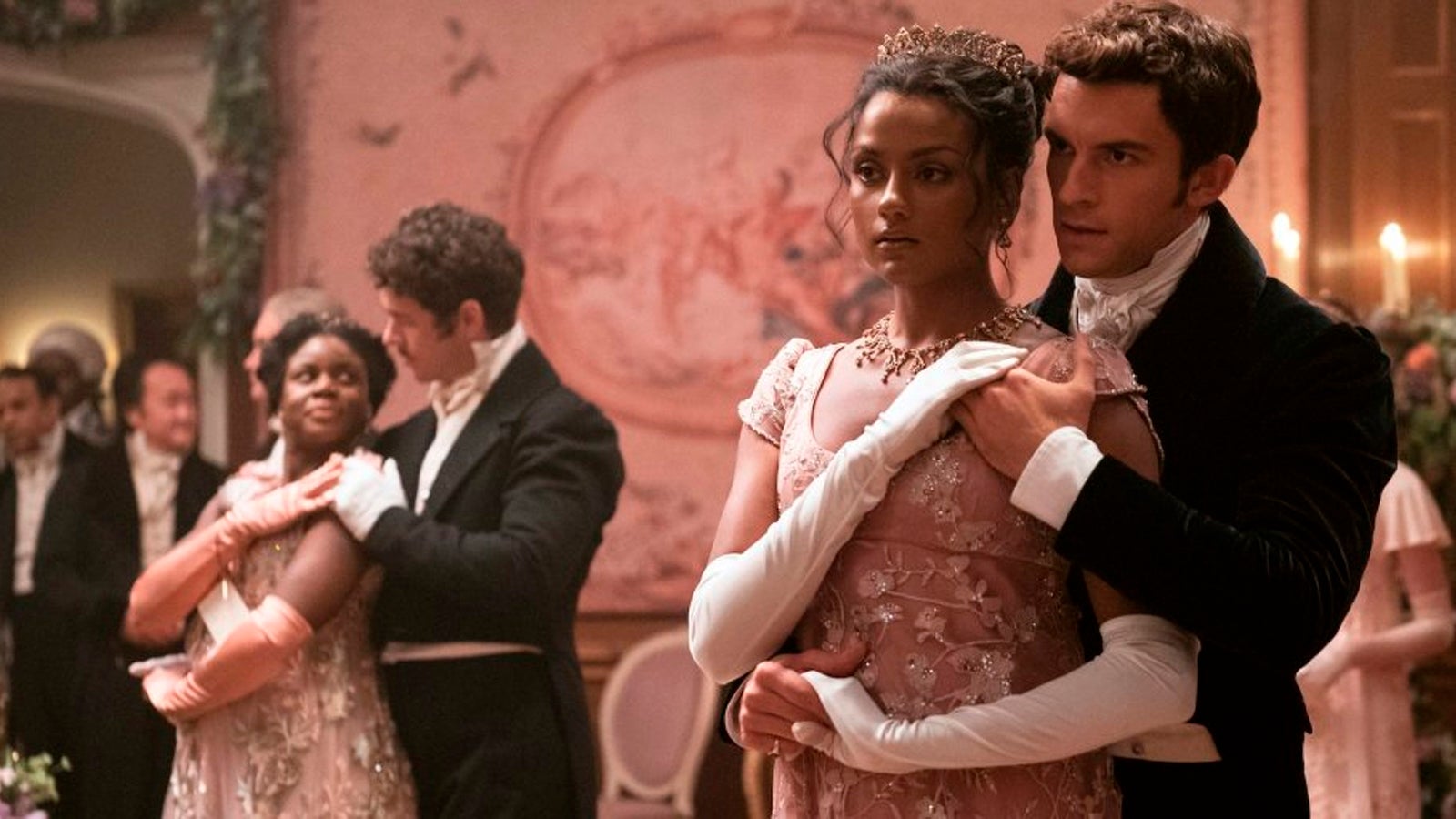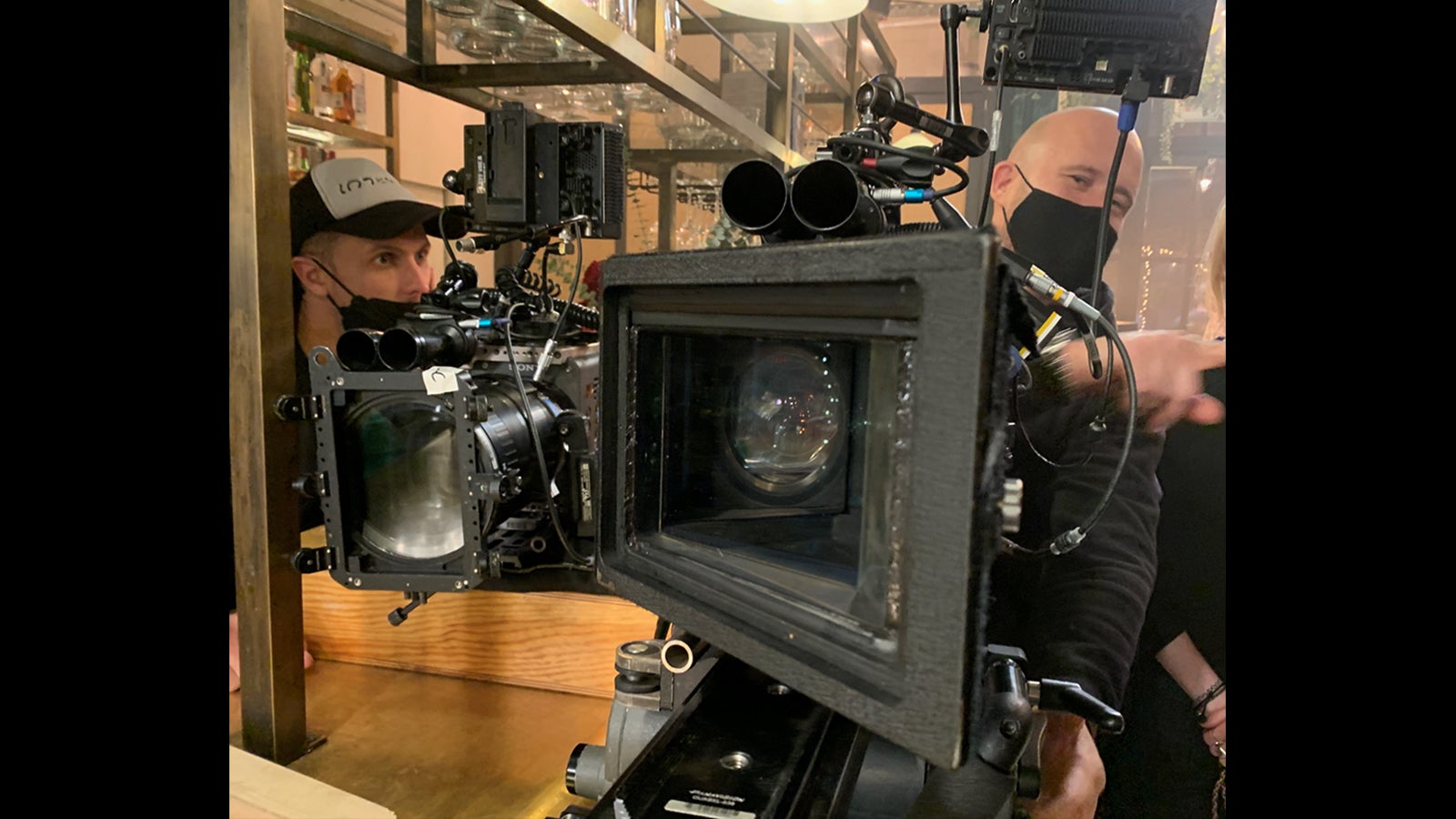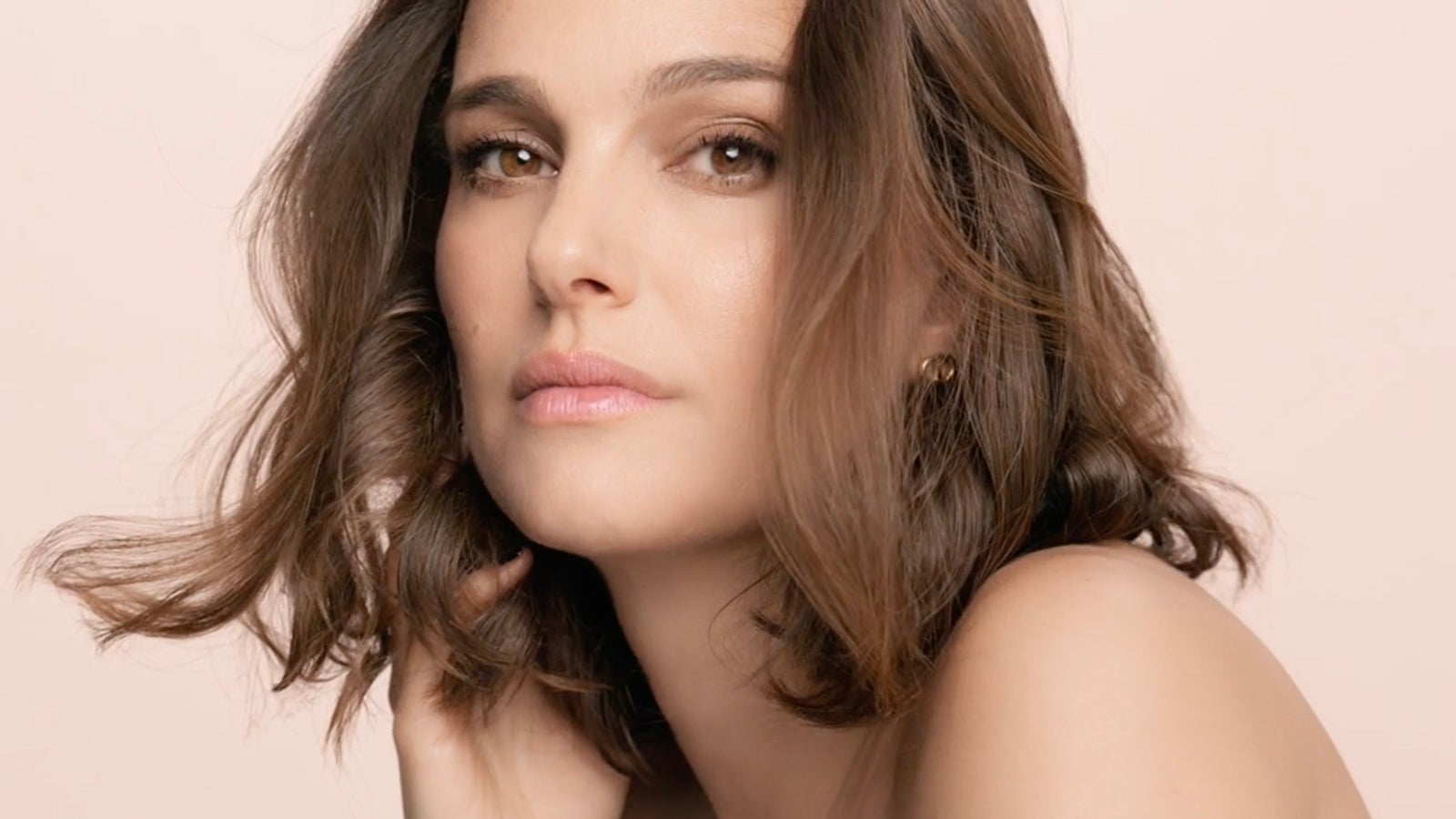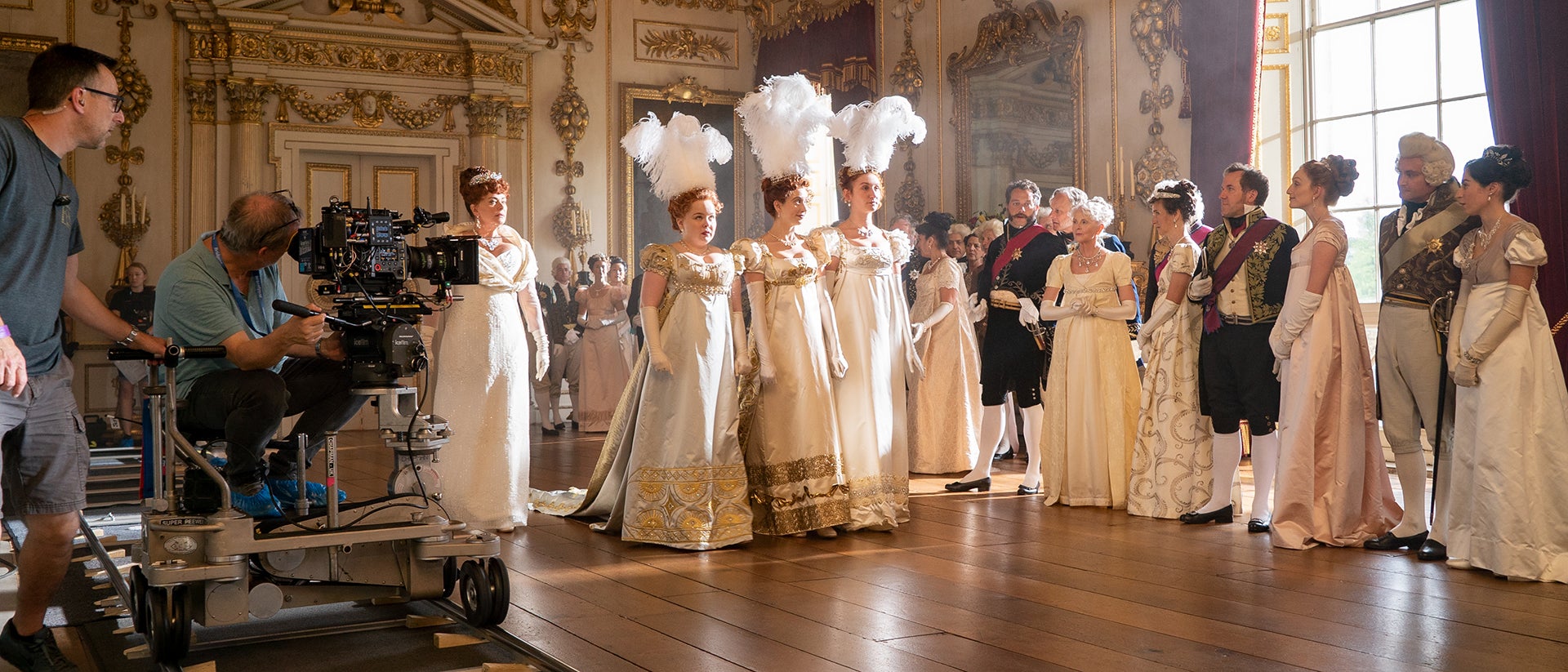
08-06-2021 - Case Study, Gear, Technology
“Bridgerton” – Shot on VENICE – A Conversation with DP Jeffrey Jur, ASC – Part 1
By: Jeff Berlin
Bridgerton is about eight close-knit siblings of the Bridgerton family looking for love and happiness in London high society. The series is inspired by Julia Quinn's bestselling novels.
First, congrats on Bridgerton becoming the biggest series debut on Netflix.
Yes, it's unbelievable and I'm so proud of it. It was a great project to work on, a joy. I'm looking forward to going back for another season. I loved the crew, and the cast was amazing.
Jeff:
That's super cool. Shooting in such grand locations, historic buildings and fabulous rooms, what was your approach to working in those spaces and what kind of limitations were you running into with gear, rigging, etc.
Jeffrey:
Shooting in the locations is spectacular. Our show is set in 1813. There wasn’t much electricity back then so I knew I'd be dealing with candlelight. There's a beauty to some of the locations that is unsurpassed. Most of them are museums now, so they're beautiful but difficult production wise, because as a camera crew, you're used to putting things up, and moving things around, and in a lot of these locations, you couldn't really touch anything, or only touch very little.
There was a person in the room while you're working to make sure you follow the rules. So, it was difficult, lighting had to be floated. Balloon lights become a big part of our gear. And the British crews there know how to work in these locations. To black out windows, you don't hang black material on the windows, you build a frame and push it up against the building very carefully. The locations also offered a lot of uniform compositions. Symmetry is such a big part of the design and construction of these places that you can't help but want to frame accordingly.
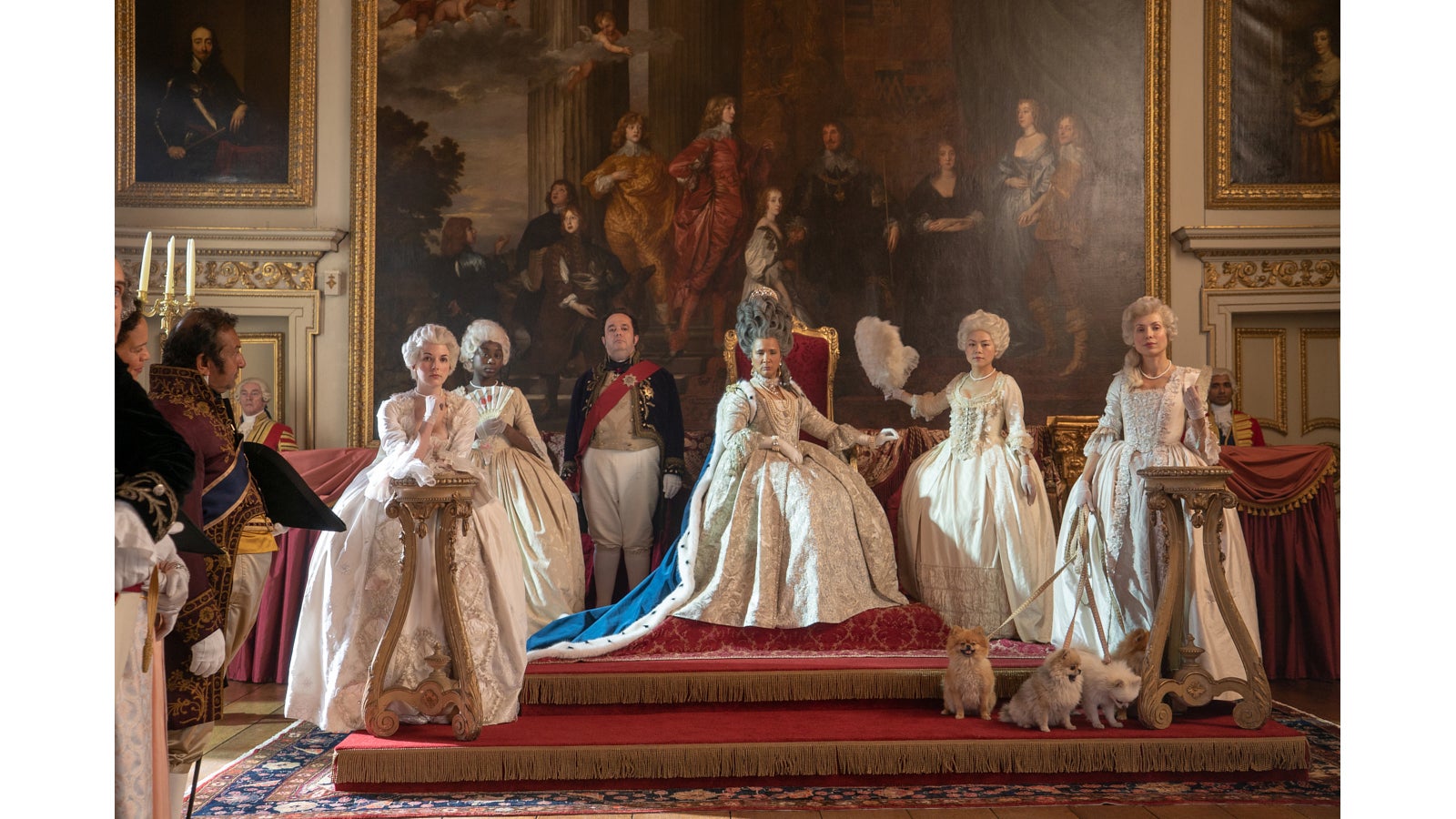
Jeff:
I felt the symmetry was really striking.
Jeffrey:
Yes, you can't help yourself. You're reaching for the cornices in the room because they're spectacular. You're trying to see the ceiling, which is really hard to do on a film like this because you want to start on the ceiling, or shoot low and up towards the ceiling, because the ceiling is so amazing. So, often, you're framing up, finding amazing shots and dropping into the scene from that.
The whole show takes place during one summer season so the light had to be beautiful all the time, in the daytime, especially. But that’s difficult to do in England, because the weather changes constantly, so we were always trying to match light throughout the day. And this was the tricky part shooting there, but the crew was amazing at matching sunlight. This was probably the most challenging aspect of our work.
We shot all our location work in the beginning because the stages weren't ready. The sets, as you can imagine, were spectacular. The dining rooms and the bedrooms were constructed, so while they were being built, we did all our location work first. We were shooting late summer into fall, and wrapped close to Christmas. So, we had some difficult weather towards the end, but it didn't seem to show, which is good. And the camera held up really well throughout all that, I have to say. I was very happy with the VENICE.
Jeff:
The fashion and design of Bridgerton are really beautiful, and I love the light. One thing I noticed is how you really brought up the skin tones in some places to where it was super flattering, quite lovely actually.
Jeffrey:
I think the intent was always to create something lifted. There are a lot of dark shows streaming right now so I felt like I wanted to go against that. This felt like the right story to tell, not with brightness so much, but a lighter feel for sure, as sort of an antidote to all the dark shows.
When I was doing post production we kept saying, "Yes, lifted," that's a great word for what we're going for, not bright so much, but something that feels light and airy. The paintings of that era were a big influence. Anything where the faces seemed to glow, Renoir, Edmund Leighton, these kind of idealistic images of life in the Regency era in England at that time, were important to us. I sometimes even brightened things perhaps a bit more than they would be naturally. It was fun.
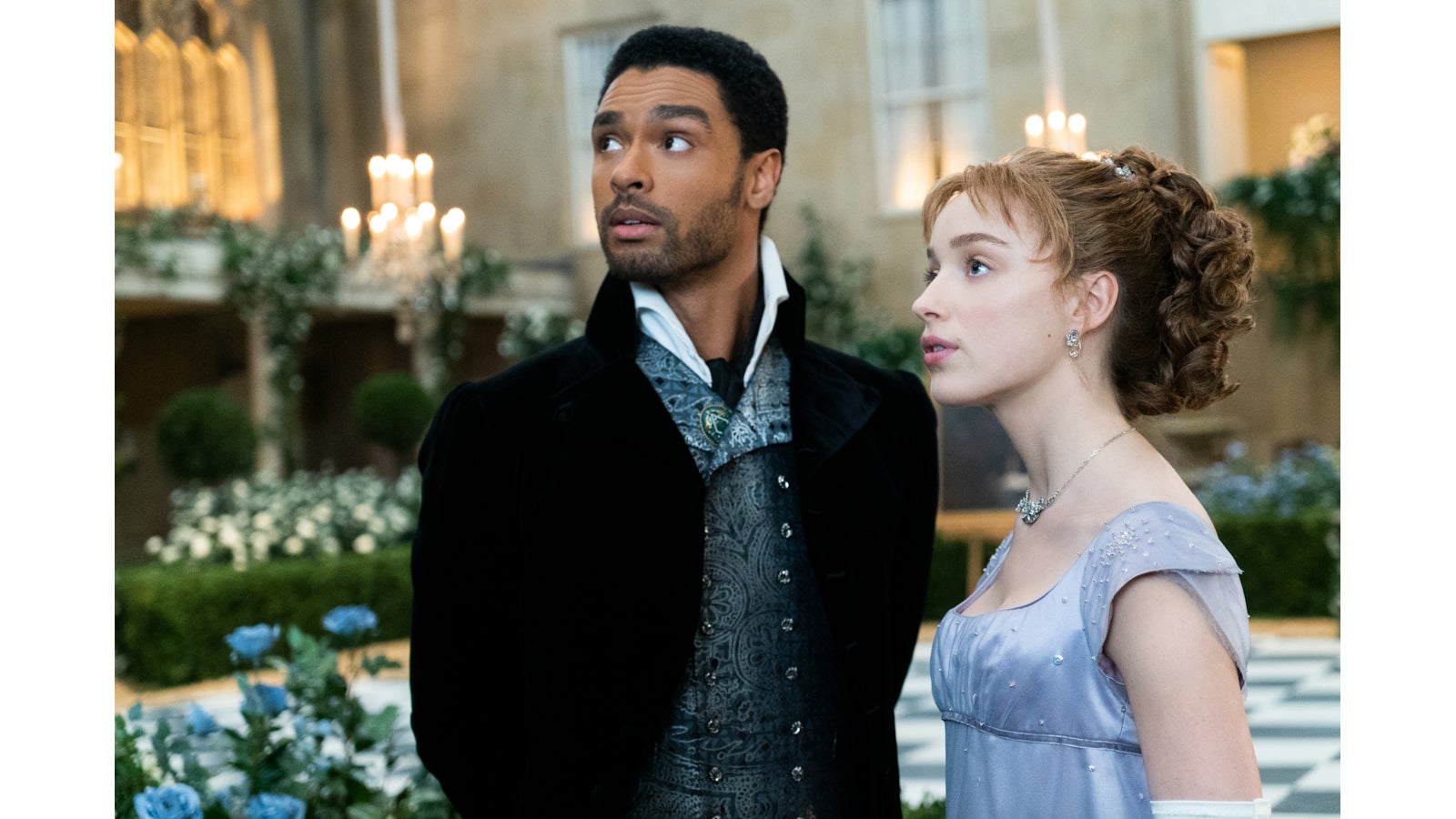
Jeff:
While we're still talking about locations and lighting, in the Bridgerton house, the blue room, for example, that salon with the piano forte, I loved the look in that room.
Jeffrey:
That's probably my favorite location. I shot some of my favorite scenes there.
Jeff:
The way the light wrapped, the fall off, and the room itself, the tones, just so pretty. I’m assuming you were you pushing a lot of light through the windows, but I’d love to hear about your approach to that room.
Jeffrey:
That entire parlor was a set, so the color in there is a Bridgerton color. The production designer, Will Hughes-Jones, who is amazing, created a color scheme for each family. It was important that we show these two families, the Featheringtons and the Bridgertons, in different light, and in different colors. That was some of the fun of the story as well, to play these two families off of each other. So, the Featheringtons had their style and Bridgertons had theirs. And so the Bridgertons' color is, predominantly this sort of Wedgewood blue, and that was the predominant color in that room. The sets were amazing, the textures, the fabrics, everything.
Jeff:
And the light?
Jeffrey:
It’s quite simple. The secret that I learned about shooting a period film in England is that a lot of these estates basically have a row windows down one side, and they’re often floor to ceiling so there's a huge source of light that can come through for daytime. What’s amazing is that there's sort of a setback to the windows so that when the light comes through, you don't actually see out the windows when you're looking lengthwise down the space, there’s just light coming in.
If you can back your lights away far enough, this works for locations as well as on sets, the light can rake across the entire width of the room without being too bright at the window and falling off too quickly. In other words, you’re giving the light space to allow that light to travel gently across that whole space, and without blowing out the windows because you're not seeing them. Really, the windows are basically big light boxes in the room and this is why a lot of these films look the way they do.
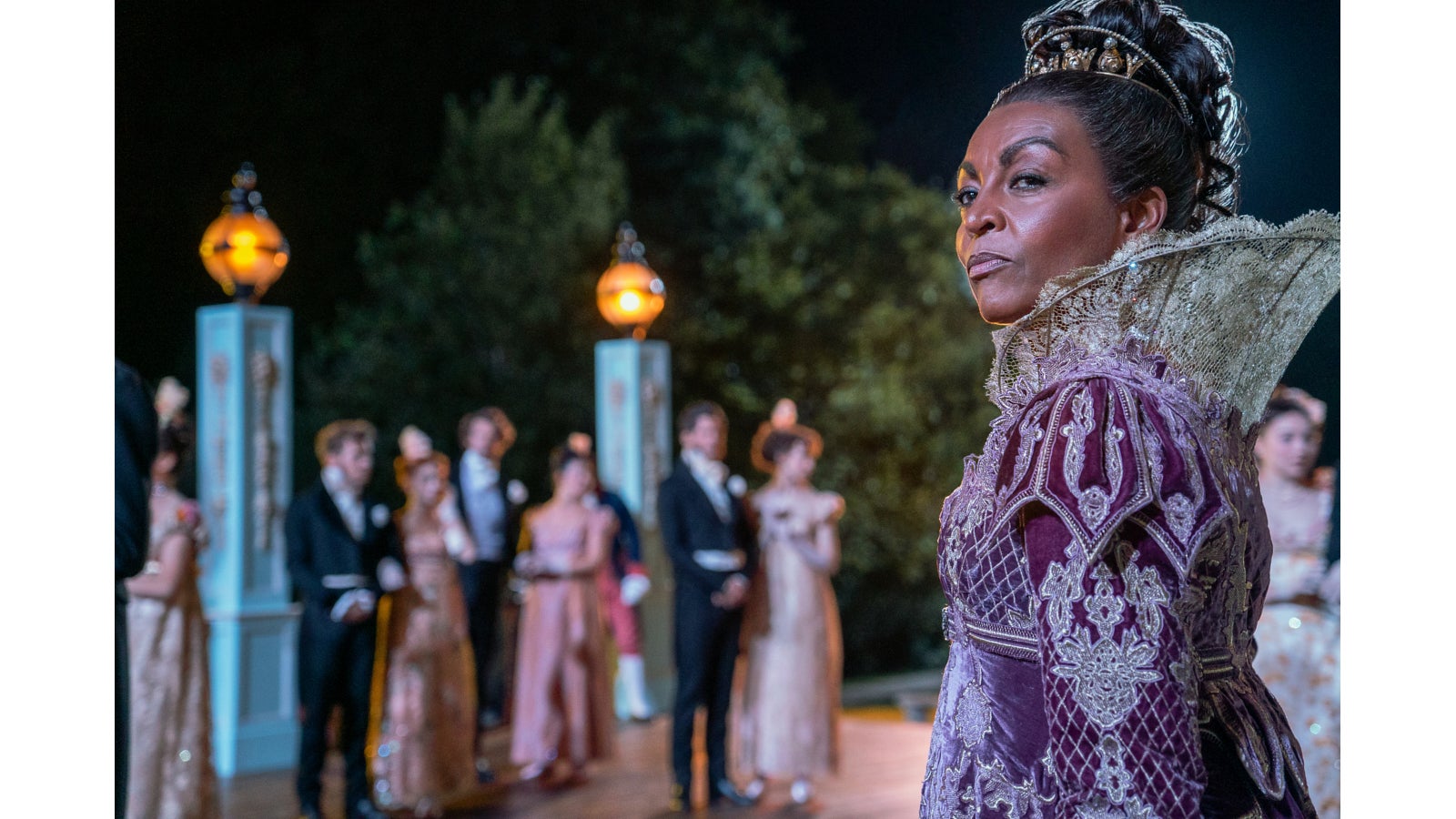
Jeff:
What lights were you using?
Jeffrey:
In that set, it was very simple, actually. We had diffused nine-light tungsten Maxi Brutes. They were wrapped so the light wouldn’t leak. And this was the main source of light. So, we created direct light where it feels like sunlight without being too harsh. There are also shears on the windows. With all that light bouncing around in the room, it pushed back just enough fill light to fill in, and with a pretty tone as well.
For the day scenes in that room, that set, it was basically just those nine-lights pushing very bright light through the windows all the way down the space. And the flexibility of a set obviously was great. Also nice about having nine-lights is that you can switch off three of them, or six of them, or just have one, or turn them all on without changing the color temperature. So, as you dim them, they warm up of course. We went with tungsten over LEDs because we couldn't find anything in LED that had the same punch that the nine lights had.
Jeffrey:
We also had Space Force lights. They're an octo LED light, about 26 inches in diameter, and flat, not heavy, and they were our baseline for daylight as if it were coming from a skylight. Between those and the light coming in the windows, it feels like a real location and not artificial. The LEDs are controllable and we had them set to do tungsten. And then in the center of the room, I had soft boxes above each set, fairly large and adjustable up and down. Those were also fitted with Space Lights so they could be tungsten or daylight, and dimmed or brightened as needed.
Jeff:
Just a bit of a top fill.
Jeffrey:
Yes, but I found that wasn't always a flattering light, especially at night if that's your only source. We had actually warmed them up with additional gels to match the candle lights. We had candles, of course, in a lot of the scenes at night. So the feeling was, the top light was the bounce off the ceiling from the chandeliers that were in view, in order to justify this large overhead source. It was a good base light to have for those scenes.
With these large rooms, I didn't want to have to start from scratch every time, and I didn't want to hang and rehang lights. The softboxes gave me a good start and then we could add from the floor as needed. For the day work, especially in a room like the blue Bridgerton room, we had the main sources coming through the windows and bounce cards to fill in a bit here and there, or sometimes black to take light away if there was too much fill.
Jeff:
Did you use many practicals and leverage the high base ISO of the VENICE?
Jeffrey:
Possibly my favorite thing about the VENICE was having that 2,500 base level available. We tested it, obviously. I was concerned about noise, as you always are, and I was amazed at the quality that came out of that camera at that high ISO level. I knew that we'd be shooting practical sets with a mix of bulbs and actual candles. Some locations, we couldn't burn candles or do atmosphere. As I said, they're like museums. On others, and on our sets. we could use candles.
I always try to feel what the real light is doing. My whole career is based on that, trying to understand where the light is coming from, where the sources are, why a light falls on someone the way it does. I was hoping to use practical candles as much as possible, but I didn't think that I could shoot with just that, so I was always supplementing with LEDs and lights that would be flickering.
I found that too much flicker was annoying and distracting, especially for a project like this. Bridgerton is meant to be idealistic and romantic, so whatever the opposite of gritty is was our intention. As such, a hint of candlelight flickering was great, but too much was distracting. I found myself lighting to match color quite often, and in the most pleasing way, but then I could still use candles to fill in for eye light and certainly to have in the background.
It's interesting, in the big dinner scene at the Bridgerton house where Phoebe and Regé are talking to each other for the first time, I had a big soft light that I would drop in for close ups to feel light coming from practical chandeliers overhead. I’d drop the light in out of shot for those close ups so the light would get into their faces. But people look down quite a bit when they're eating and I needed some light to come up from the table. For that I lit prop candles and hid them around the table behind food and behind flower arrangements to light faces, and at ISO 2,500, it looked spectacular and felt totally real. So, again, it was a mix of practical light and artificial light.
That high base ISO became really valuable. In fact, there was a scene at the end of one of the episodes where Phoebe receives some news and goes into a small room during an opera, and we had a lot of candles in there. I had some lights set up, and I kept turning the lights off until we had only candles, real candle light, and it looked amazing. It was absolutely beautiful. I wasn't even shooting that wide open, maybe a T2 or T2.8 at 2,500 and it looked perfect. It was a simple scene but very emotional, very powerful.

Jeff:
I have one more question about light before we talk more about camera. What were you using for catch light in the actor's eyes?
Jeffrey:
Well, it was candlelight for some of it, for sure. And I used them more and more as I realized how sensitive the camera was. I would have the prop guys that deal with the candles light two or three of them and put them just off camera, so that was filling them in. But for other stuff for night work, small LEDs. Especially with the Steadicam, I would try and glue a little tiny LED light on there.
It's so important for me to be able to read performance, even in a dark scene, and be able to see the actor's eyes and see the emotion that's there. I mean, this even goes back to Gordon Willis, putting these tiny little catch lights in some of the eyes of the actors on Godfather when he wanted to see what they were thinking and see what was going on. So, for me, that's always important. When you can't see their eyes, it better be for a good reason.
Part 2 Coming Soon
